Lesbian Herstory Archives
Introduction
Text-to-speech Audio
The Lesbian Herstory Archives is home to the world’s largest collection of materials by and about lesbians and their communities. It is also a community center and museum. The Archives began in the 1970s, born out of the Gay Academic Union when feminists and lesbians in the group realized a need for the preservation of lesbian history. The Archives were originally housed in the apartment of founders Joan Nestle and Deborah Edel. Its collections grew immensely between the 1970s and the 1990s and the Archives had to move into its current building in Brooklyn in 1993. The Archives have an extensive collection of books, zines, periodicals, photographs, tapes, letters, diaries, and more reflecting lesbian life, culture, and history from the early 20th century to the modern day. As of 2022, the Lesbian Herstory Archives has been designated as an individual landmark by the New York City Landmarks Preservation Commission.
Images
The Lesbian Herstory Archives' current location at Park Slope, Brooklyn in 2016. Photo by Christopher D. Brazee.
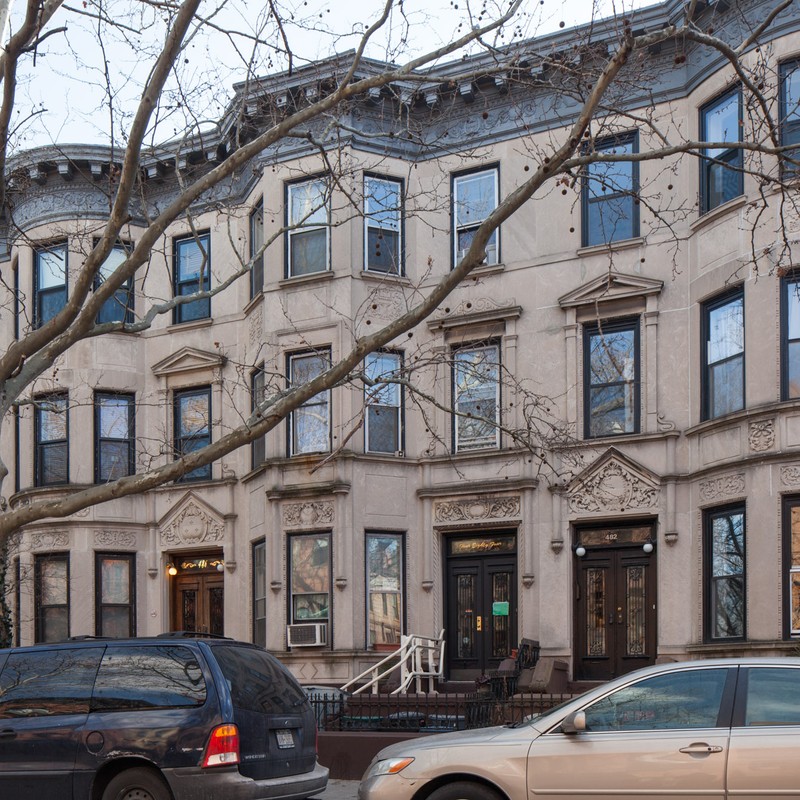
Joan Nestle with other members of the Archives Paula Grant, Judith Schwartz, and Polly Thistlewaite marching through Park Slope, Brooklyn in 1993. Photo by Saskia Scheffer.
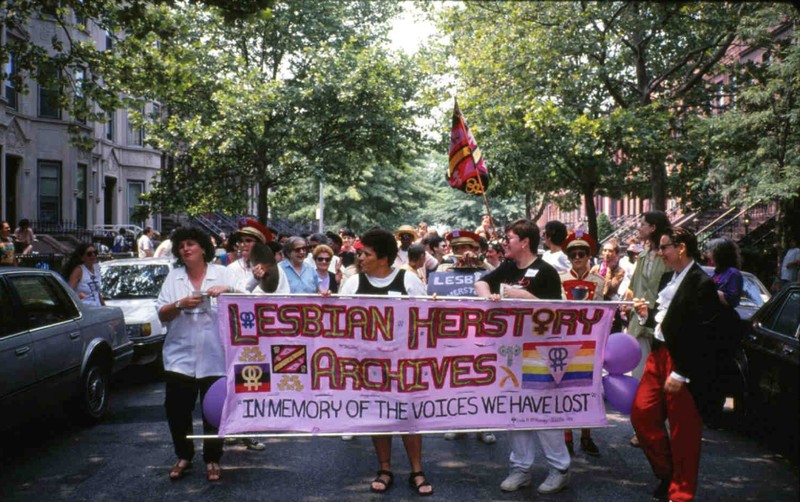
The library of the Lesbian Herstory Archives
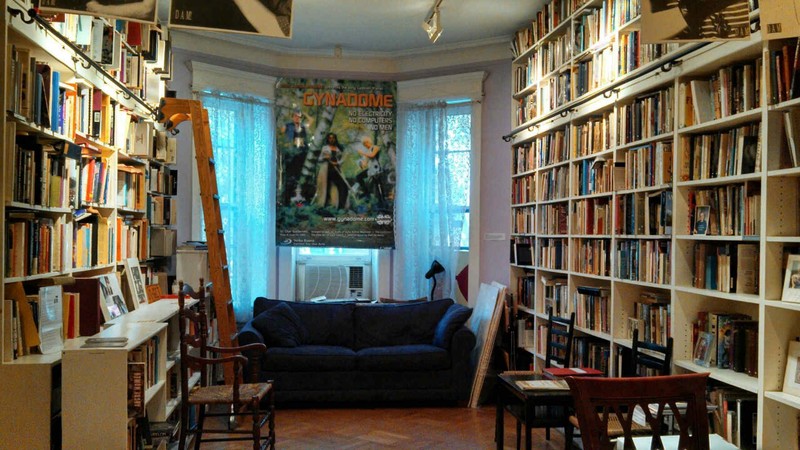
Lesbian Herstory Archives coordinators at the opening of the new location in 1993. Photo by Morgan Grenwald.
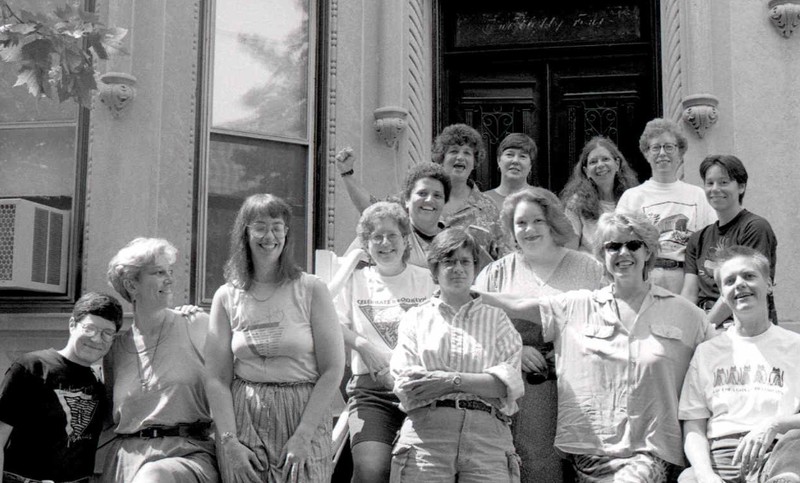
Lesbian Archivist and LHA co-founder Joan Nestle photographed by Digby Duncan in 2020.
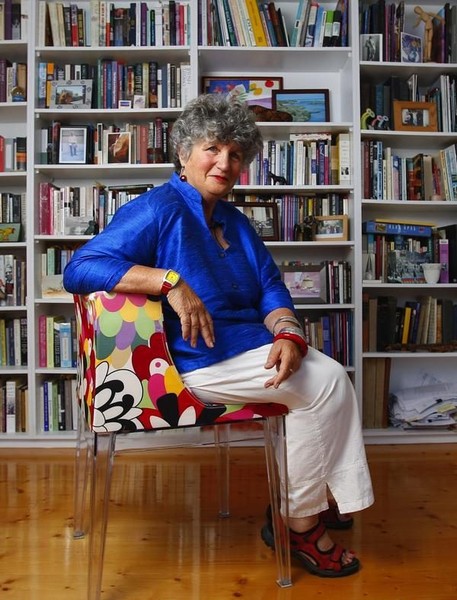
LHA co-founder Deborah Edel circa 1980s. Photo by Morgan Grenwald.
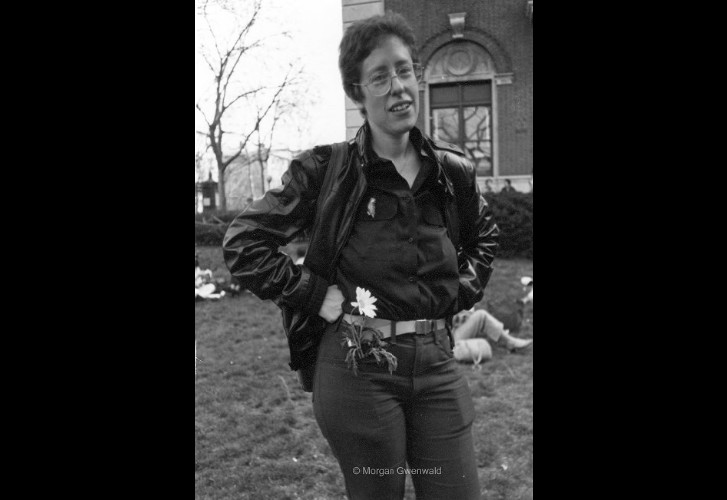
Mabel Hampton circa 1919.
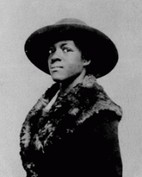
The Fall 2001 issue of the Lesbian Herstory Archives newsletter.
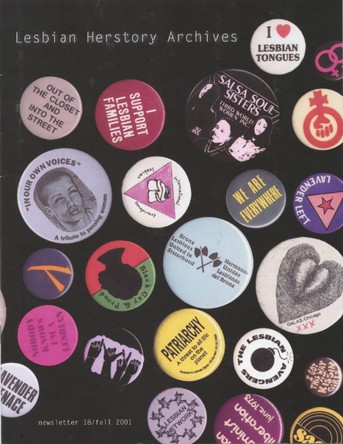
Backstory and Context
Text-to-speech Audio
The Lesbian Herstory Archives were born out of the Gay Academic Union (GAU), founded in 1972 by gay and lesbian academics from City University in New York. Their mission was to fight for the inclusion of LGBT material in course content and “to promote and disseminate research on homosexuality and gay people.” The GAU seemed to be heavily focused on gay men and their issues, much to the frustration of feminists in the group. When one feminist in the Union, Dawn Atkins, spoke up about the issue of sexism, she felt that “enthusiasm for the topic had been tepid.” In 1973, some of the women in the GAU formed a Women’s Caucus where they could discuss sexism and the exclusion of lesbians within the Union. This group included Joan Nestle and Deborah Edel. Nestle is a prominent Jewish and openly lesbian activist, writer, and archivist. She grew up in the Bronx, where she was involved in the 1950’s working-class, butch/femme bar culture in Greenwich Village. She worked as an English lecturer and is a “creator of lesbian literature.” Edel was Nestle’s former partner. She worked as a Coordinator for the Archives for forty years and was a Historical Consultant on the documentary Before Stonewall.
At a 1974 Women’s Caucus meeting, Nestle and another GAU member Julia Stanley “talked about the precariousness of lesbian culture and how so much of [lesbians’] past culture was seen only through patriarchal eyes.” As a result of these meetings, a grassroots lesbian archives was born, which would come to be known as the Lesbian Herstory Archives (LHA). As for the GAU, many radicals had left the group by 1975. There were about a dozen chapters across the nation by 1979, including one in LA. In the early 1980s, the name was changed to LGAU (Lesbian and Gay Academic Union) in an attempt to include lesbians. By 1987, the national chapter and the LA chapter dissipated. While some chapters continued into the 1990s, ultimately the LGAU fizzled out by the 21st century.
Meanwhile, the Lesbian Herstory Archives continued to grow throughout the decades. The LHA is a not-for-profit organization staffed entirely by volunteers and interns. Upon its founding, Nestle and Edel agreed that they didn't want to make money from patrons or get funding from the government. In the first ten years, their goal was to "build the trust of the communities [the Archives] were serving." They’ve received funding from donations by individuals, benefits such as At Home with the Archives and other co-sponsored events, and grants from among the lesbian community. The LHA is the “world’s largest collection of materials by and about lesbians.” When it began, most of the materials in its collection came from founders like Joan Nestle, who donated everything she’d written. The Archives also put out calls for donations. They received papers, diaries, journals, photos, tapes, posters, buttons, periodicals, zines, t-shirts, and more. In 1976, activist Mabel Hampton donated her extensive lesbian pulp fiction paperback collection. Hampton became involved in the LHA through her friendship with Joan Nestle. Hampton was a performer during the Harlem Renaissance and lived openly as a lesbian. In 1952, she began serving as a domestic worker in Nestle’s childhood home, where their friendship began. When the LHA was created, Hampton volunteered there greeting visitors and carrying the LHA banner at various marches.
The Archives also received large donations from the New York Lesbian and Gay Historical Society and the Lebsian History Project when both of those organizations were dissolved. Writer and activist Audre Lorde donated her manuscripts and personal papers to the archives. Amongst the Archives special collections is the Marge Macdonald collection, which includes her books, papers, and journals. MacDonald donated these materials in her will, against the wishes of her family who wanted them all destroyed. The LHA’s collection also includes photographs, many of which can be viewed online, depicting lesbian life and political activism in the 20th century. They have about 11,000 books and monographs by or about lesbians including fiction, non-fiction, poetry books, and photography books. The Archives’ zine and periodical collection ranges from titles dating back to the 1940’s to titles from today, with approximately 1,300 titles in total. Their digital collections include digitized audio cassettes and video tapes within 10 exhibits. Other collections within the LHA include those from organizations such as Daughters of Bilitis, the Salsa Soul Sisters, and the New York chapter of ACT-UP. In June of 1975, the LHA published the first issue of their newsletter, now archived by the organization. The newsletter was sent out for free to anybody on their mailing list. According to their website: “To make sure nobody could see the contents through the thin envelope, we added an extra cover, with simply the word “Newsletter” on it. It was never our intent to “out” women by accidentally exposing the kind of material they received in the mail: respecting women’s privacy has always been important to us.”
Until the 1990s, the LHA collections were housed in Joan Nestle and Deborah Edel’s apartment in the Upper West Side of Manhattan. Because the collection was beginning to outgrow this space, the Archives raised money to buy the building at 484 Fourteenth Street in Park Slope, Brooklyn. This building had originally been constructed in 1908 as a two-family home. It was purchased by the LHA in 1990 and, after a year’s worth of renovations, officially became the Archives’ home in 1991, officially opening in 1993. The Archives have been housed there ever since.
Sources
Our Herstory, Lesbian Herstory Archives. Accessed January 4th, 2023. https://lesbianherstoryarchives.org/about/a-brief-history/.
Deborah Edel, Joan Nestle & Judith Schwarz, Lesbian Herstory Archives Audi/Visual Collection. Accessed January 4th, 2023. http://herstories.prattinfoschool.nyc/omeka/items/show/416.
Joan Nestle Residence, NYC LGBT Historic Sites Project. Accessed January 4th, 2023. https://www.nyclgbtsites.org/site/joan-nestle-residence/.
Mabel Hampton & Lillian Foster Residence, NYC LGBT Historic Sites Project. Accessed January 4th, 2023. https://www.nyclgbtsites.org/site/mabel-hampton-residence/.
Atkins, Dawn. Looking Queer: Body Image and Identity in Lesbian, Bisexual, Gay, and Transgender Communities. England. Taylor & Francis, 1998.
Duberman, Martin B.. Left Out: The Politics of Exclusion : Essays, 1964-2002. Boston, Massachusetts. South End Press, 2002.
Minton, Henry L.. Gay and Lesbian Studies. Philadelphia, Pennsylvania. Haworth Press, 1992.
Lesbian and Gay Academic Union Records, Online Archive of California. Accessed January 4th, 2023. https://oac.cdlib.org/findaid/ark:/13030/c8wm1bsm/.
McCroy, Winnie. Lesbian Herstory Archives Turns 35, Edge Media Network. February 5th, 2009. Accessed January 4th, 2023. https://boston.edgemedianetwork.com/story.php?ch=news&sc=&sc2=features&sc3=&id=85768.
Nestle, Joan. The Will to Remember The Lesbian Herstory Archives of New York. Feminist Review, vol. 34, no. Spring 199086 - 94. JSTOR.
Robertson, Jennifer. Same-Sex Cultures and Sexualities: An Anthropological Reader. New York, New York. John Wiley & Sons, 2008.
Not Just Passing Through. Carlomusto, Jean et al., 1994.
"Biographical Information From Members." Lesbian Herstory Archives Newsletter (New York City) . June 1975 ed.
LHA Newsletters, Lesbian Herstory Archives. Accessed January 4th, 2023. https://lesbianherstoryarchives.org/collections/newsletters/.
The Lesbian Herstory Archives, NYC Landmarks Preservation Commission. June 28th, 2022. Accessed January 6th, 2023. https://www1.nyc.gov/assets/lpc/downloads/pdf/proposed_landmarks/LesbianHerstoryArchives_484%2014th%20St_BK_Brief_Calendar_20220628.pdf.
NYC LGBT Historic Sites Project
NYC LGBT Historic Sites Project
NYC LGBT Historic Sites Project
NYC LGBT Historic Sites Project
Jewish Women's Archive
Digital Culture of Metropolitan New York
Women's Plaza of Honor, Universiy of Arizona
Lesbian Herstory Archives
